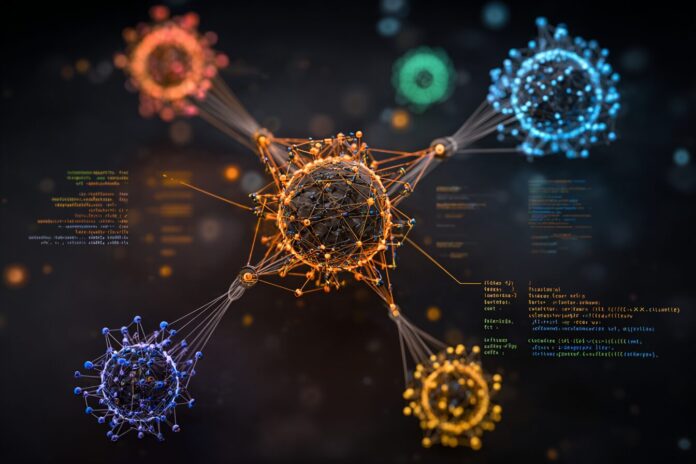Unveiling the Next Generation of AI Innovation
The artificial intelligence landscape is abuzz with excitement. A new contender, the GPT-5-Reasoning-Alpha model from OpenAI, has surfaced in technical forums just ahead of its official release. Because early reports and code leaks have hinted at groundbreaking improvements, industry insiders are eagerly piecing together clues about what to expect from this next-generation AI.
Most importantly, initial sightings in specialized code repositories and developer hubs indicate that this model carries significant enhancements in both reasoning and coding. Besides that, experts note that this development is part of a pattern where OpenAI gradually unveils their technology, allowing the community to witness evolutionary improvements before the full public announcement.
Recent Sightings and Early Testing
Recent technical observations have added layers of credibility to the buzz. For instance, on July 13, a commit in the esteemed Biosec Benchmark repository mentioned “GPT-5 Reasoning Alpha.” This repository, tasked with assessing AI capabilities in detecting biosecurity threats, underscores the model’s potential role in high-stakes research. Therefore, this early integration indicates that the model may soon extend its reach beyond simple conversation into complex security applications.
In another striking instance, the so-called o3 Alpha Responses was spotted on WebArena, a platform renowned for testing real-world chatbot performance. Because testers reported superior coding abilities and rapid application development skills, many believe this may be closely related to the upcoming GPT-5 release. Moreover, these technical demonstrations support emerging narratives from sources like BleepingComputer and TestingCatalog, adding further excitement to the anticipation.
Breakthroughs in Reasoning and Code Generation
Why does the unveiling of GPT-5-Reasoning-Alpha matter so much to developers and researchers alike? Because this model promises a leap in both logical reasoning and code generation. Initially, benchmarks indicate that it can manage complex multi-step logic tasks while producing cleaner, more efficient code. This innovation stands in contrast to previous iterations that sometimes struggled with nuanced technical requirements.
Developers have experienced first-hand the agile and responsive nature of the model. Most importantly, they praise its ability to quickly generate robust code — whether for simple web pages or interactive web applications. Hence, industries ranging from creative tech solutions to high-security research can look forward to new collaborative workflows with AI as a trusted partner. Resources such as the TechCrunch report further detail these advancements and underscore the vast potential of this innovative system.
OpenAI’s Cautious Rollout and Enhanced Safety Protocols
While the anticipation grows, OpenAI remains steadfast in its commitment to safety and ethical innovation. In July 2025, the company delayed releasing its open source model to run additional safety tests and assess high-risk scenarios. Because the stakes are higher with a model capable of profound reasoning, these extra precautions are essential. Sam Altman and his team have repeatedly emphasized that every technological leap must be balanced with robust security measures, especially when addressing risks in biosecurity and digital protection.
This meticulous approach is reassuring for both developers and end-users. Most importantly, it highlights that safeguarding against unintended misuse is as crucial as pushing technological boundaries. Therefore, even as we celebrate the model’s high performance—evident in live testing scenarios such as those shared on YouTube—we remain mindful of the ethical imperatives guiding its deployment.
Expanding the Horizon: Applications Across Industries
The anticipated release of GPT-5-Reasoning-Alpha is poised to revolutionize multiple sectors. For example, its advanced reasoning capabilities may soon be integral in cybersecurity operations, where rapid threat detection and automated responses are critical. Besides that, researchers in fields like biosecurity will likely leverage this new model for improved risk assessments, as evidenced by discussions in technical repositories and security forums.
Moreover, educational institutions and content creators stand to benefit from the model’s superior logical reasoning. Because the AI can now manage structured problem-solving and generate coherent code snippets, it could also serve as a dynamic learning tool. This shift represents more than a technical upgrade—it signals a new era in AI-driven productivity. Explorative analyses on platforms like Exploding Topics reinforce this notion by comparing historical trends in AI advancements with the current leap forward.
The Future: Ethical Considerations and Industry Impact
The journey toward GPT-5 underscores important ethical and operational questions. Because the model shows immense promise, it raises the bar for responsible AI development. Developers and policymakers alike are urged to consider potential biases and unintended consequences when deploying such technologies in sensitive areas such as medical research or security analytics.
Besides that, experts advocate for continued transparency from AI developers. Regular updates, community feedback, and robust safety tests will play critical roles in shaping the future landscape of artificial intelligence. As noted by multiple tech commentators and research analysts, this proactive approach will ensure that advances in AI translate into safe, practical benefits for society at large.
Looking Ahead: What to Expect from GPT-5
In conclusion, the early glimpses of GPT-5-Reasoning-Alpha offer tantalizing possibilities. Because its capabilities in reasoning and coding are so advanced, industries are already speculating on the transformative potential of such technologies. The model is expected to launch sometime in summer 2025, following a controlled, safety-first rollout plan.
Ultimately, the promise of GPT-5 lies in its blend of technical prowess and thoughtful ethical application. Therefore, whether you are a developer, researcher, or tech enthusiast, keeping a close eye on OpenAI’s evolving projects is essential. As more details emerge from trusted sources like TechCrunch and community updates on BleepingComputer, the race toward safer and more capable AI continues to inspire and challenge the status quo.
References
- BleepingComputer – New ChatGPT o3-alpha model hints at coding upgrade
- Exploding Topics – When Will ChatGPT-5 Be Released (July 2025 Update)
- YouTube – OpenAI’s NEW GPT-5: The Most Powerful Coding Model
- TechCrunch – ChatGPT: Everything you need to know about the AI-powered chatbot
- TestingCatalog – Signs of GPT-5 emerge in Biosec repo as OpenAI nears release



